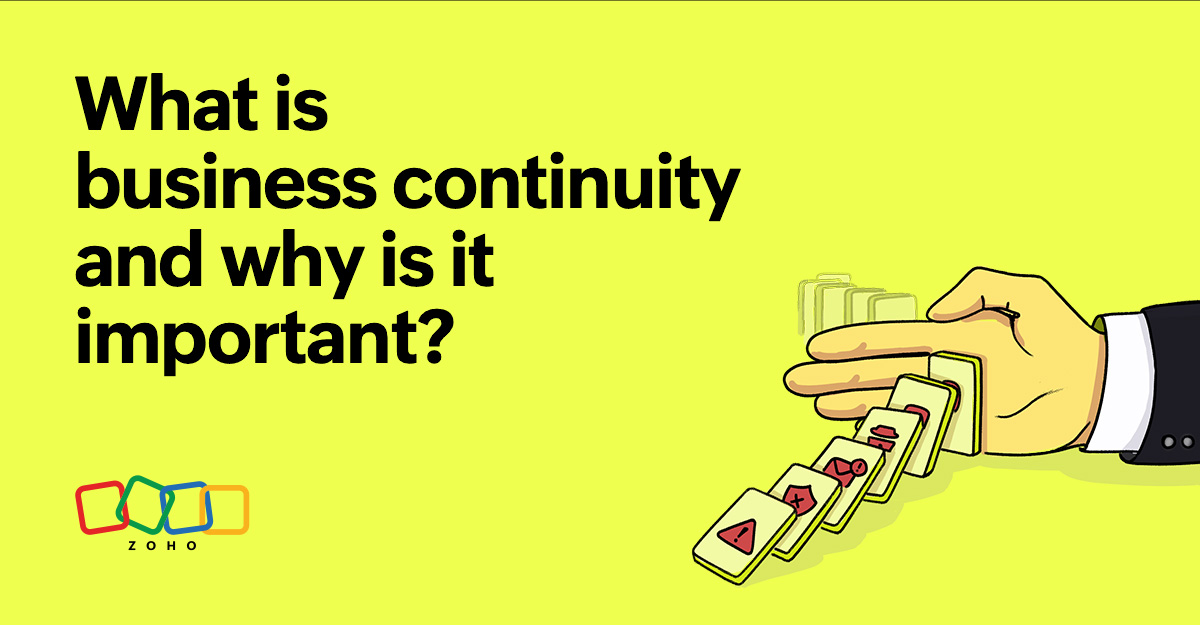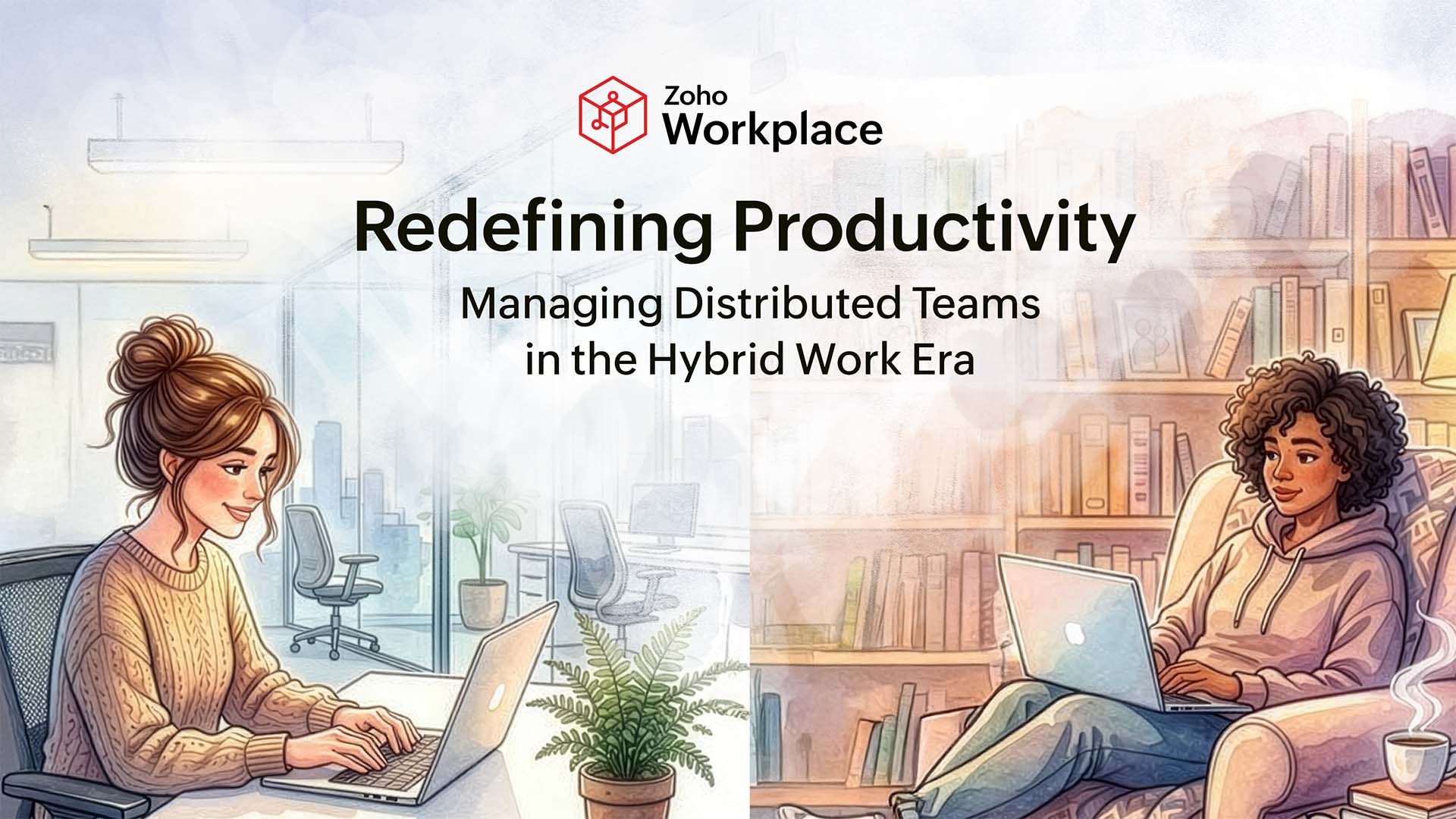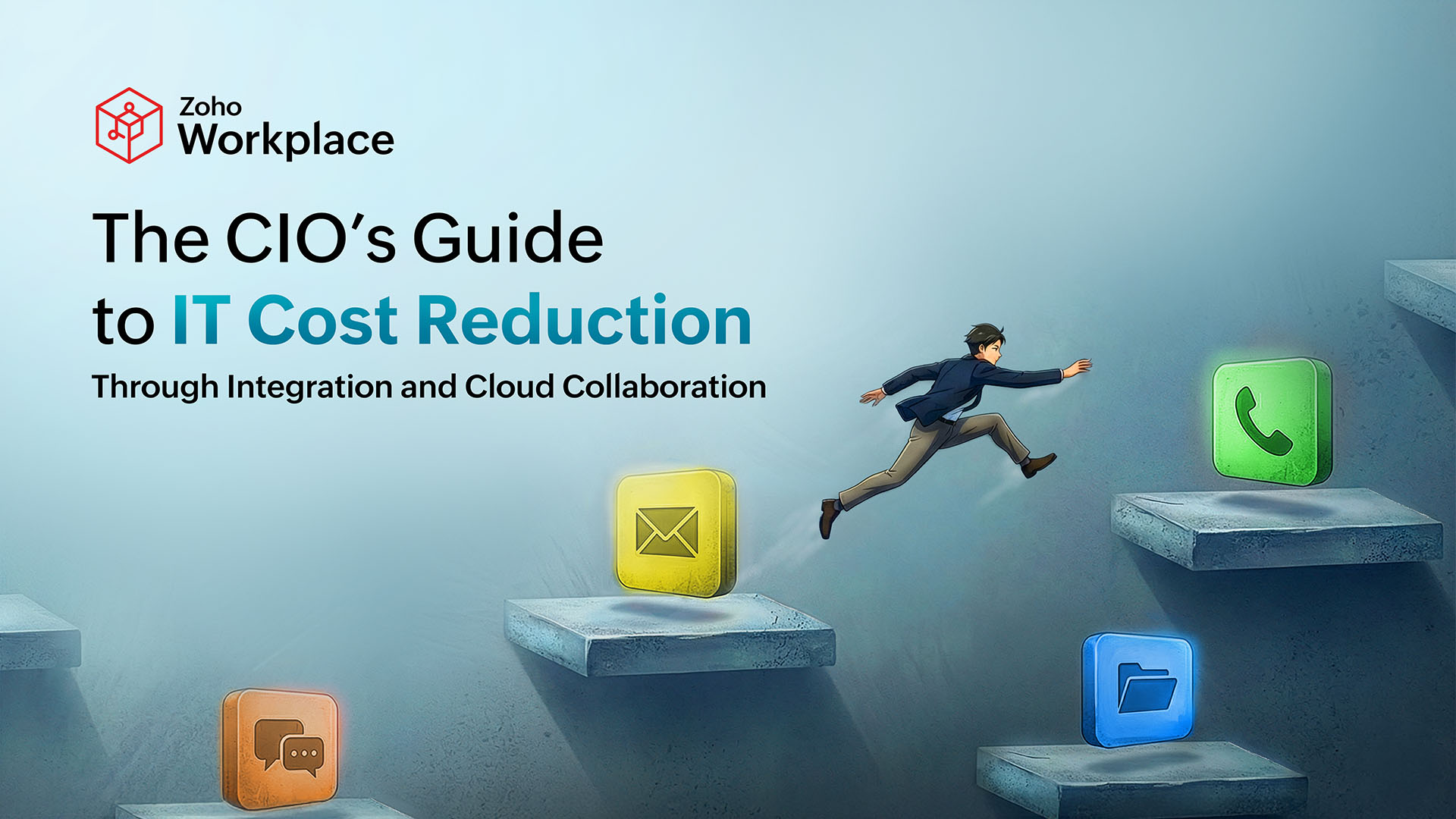- HOME
- All Topics
- Thought Leadership
- What is business continuity, and why is it important?
What is business continuity, and why is it important?
- Published : August 10, 2023
- Last Updated : November 2, 2023
- 1.6K Views
- 5 Min Read
Picture this. You’re seated at a restaurant after a long wait and you’re craving ice cream. But, the waiter says that the ice cream machine isn't working because of a sudden power outage. You'd be pretty disappointed, wouldn't you? You'd wish the restaurant had set up a generator or an alternative power source, right?
Businesses need a certain degree of planning to continue operations during times of crisis—a superhero of sorts swooping in at challenging times to save the day!

What is business continuity?
Business continuity is a business’s ability to continue critical functions in the event of an emergency, disaster, or other disruption. Events may include natural disasters, outages, security breaches, pandemics, cyberattacks, and everything in between. To overcome all of these events, it is important to use resilient business technology.
Why is business continuity important?
Any business must weather storms, sudden or otherwise. Let’s look at the example of the restaurant. Why should it plan for business continuity at times of crises?
Bubble wrap your reputation
If the restaurant disregards business continuity, it looks less reliable. As a result, the existing customer base dwindles. This tarnishes the reputation it has built over time.
Happy customers equal a flourishing business. A well-charted plan can show the commitment to delivering safe, top-notch services even during challenges. Wouldn't we keep going back to the restaurant? Yes, we would!
Cut financial losses
A business without preventive plans or workarounds during a pinch bleeds money. It can cripple the business. Implementing safeguards and bouncing back from crisis saves money and mitigates financial losses.
If the restaurant has a failover mechanism, e.g., a power generator in this case, it can continue providing its customers with the finest service. In fact, it acts as more than a band-aid to the bottom line. It improves profits as more customers line up for its seamless service.
Save time and effort
Nobody likes to be a sitting duck. In case of outages, the restaurant must know points of contact in the local utilities in addition to following the steps for restoring its operations.
Businesses simply cannot afford to wonder about the next course of action in the aftermath of a disruptive event. Precautionary measures and defined levels of response can save a lot of time and effort.
Adhere to regulatory needs
Oh no! The power went out and your restaurant's freezer is not operational. Inventory worth thousands of dollars are at risk and you may have to throw it out if the outage is prolonged. Not discarding perishable food after an extensive power outage poses a health hazard, and the authorities will soon be on their way to shut the place down.
Businesses are subject to different regulatory requirements. A proper game plan helps it become regulation-proof and minimizes legal penalties and potential repercussions.
Boost morale
Assume you’re working at a restaurant that has a well-charted plan for business continuity. You’re trained to handle disruptions and disasters, and you know who to get in touch with for help and the list of next steps. The simple knowledge that your safety and well-being is top priority is reassuring, isn’t it?
The employees of your business feel secure about working in a safe environment. This reduces their anxiety and boosts their morale.
What are the components of business continuity?
1. Business impact analysis
In case of a house fire, we gather our most prized possessions before bolting out the door. We need to decide what’s important enough to prioritize. This extends to any business looking to protect its major operations. A business impact analysis (BIA) comes to the rescue.
A BIA gathers a bird's eye view of the business functions with the most impact. In case of a calamity, it spotlights the critical operations and resources to be prioritized, preserved, and restored.
2. Risk assessment
Not every threat is grave and not every functionality is critical. The second step is to assess all of the potential threats and vulnerabilities. This involves playing out a lot of what-ifs. Businesses may be in a pickle if they’re blindsided by risks.
3. Planning
The next phase is putting together a draft of the information, possible threats, alert levels, critical resources, and modes of communication. Maybe you’re a business owner striving to protect your business from threats like cyberattacks. In that case, you can use secure communication channels to prevent any security threats. This phase involves developing a prudent plan to parry and recuperate.
4. Testing/simulation
Imagine that your plan is primed and ready. A disaster strikes and it’s time to carry out the plan. Only then do you realize the gaps in it. Besides that, the employees have no recollection of the steps because it’s been a while. Disruptions don’t occur every day, do they?
Continuous testing, simulation drills, and periodical reviews refine the process and improve the chances of success. If you find it difficult to schedule them at regular intervals, use an organized business calendar.
5. Response
When the crisis hits, the plan kicks into action. It’s all about thinking quickly on your feet, executing the emergency plan, and ensuring the safety of your staff, customers, assets and data.
6. Recovery
Now that you’ve handled the crisis, it’s time to bounce back stronger. Recovery focuses on the post-crisis period. This is all about getting the business back on its feet, recovering what was lost, and restoring normal operations.
Business continuity plan vs business continuity management
BCP and BCM may sound the same but they have distinct roles. One outlines the action plans while the other takes the big-picture approach.
A business continuity plan (BCP) is a detailed playbook of strategies to handle crises or interruptions. Business continuity management (BCM) represents the ongoing efforts of building resilience through continuous refinement, preparedness, risk management, and training.
For instance, you notice that your organization's current location is prone to natural disasters. You can draft a plan to protect your operations. In addition to that, you can also build a resilience team that works at a different location or remotely using a cloud email. A business or organization with both a plan and a management system will have the advantage in handling sudden interruptions.
Wrapping up
Business continuity is essential for any business, digitalized or traditional, to thrive during unexpected challenges. However, it’s not a one-hit wonder. It starts with devising an outline and is then supported by continuous management, training, and constant refinement.
 Srinath Vijayakumar
Srinath VijayakumarSrinath is a product marketer for Zoho Workplace. He talks about productivity, tips to improve communication, and nuggets on doing your best at your workplace. He has great interest in bringing a fresh perspective to the forefront. He is highly optimistic to the extent that he opens the refrigerator every 10 minutes, hoping to find something new. Outside of work, you will catch him playing football, travelling or writing half-finished stories.


